Search Results for Tag: Abu Dhabi
“We are living in an ice-dependent world” (Iceland’s President)
During my recent visit to Sustainability Week in Abu Dhabi, I was interested to meet the President of Iceland, Ólafur Ragnar Grímsson. He gave one of the keynote speeches at the World Future Energy Summit and was also on the Jury for the prizes presented as part of the Zayed Future Energy Prize to initiatives around the world to promote sustainability through renewable energy in different parts of the world.
I asked him how he had come to be involved so closely with Abu Dhabi, the icy north working with the desert oil state. The link goes back to an Abu Dhabi delegation visiting Iceland 8 years ago to talk about using clean energy. Since then, he finds it fascinating and encouraging to see how the Gulf state is turning itslf into “one of the primary locations in the world for dialogue and cooperation on a clean energy future.”
But the message I’d really like to share with the Ice Blog community is the one about the undeniable connections between what’s happening in the Arctic and what’s happening in the rest of the world. President Grímsson explained his view to me at a reception after the prize-giving ceremony.
We live in an ice-dependent world, says Iceland’s President
In a nutshell, he says one of the key results of scientific research is recent years is that the Arctic plays a major role in influencing weather and other developments around the world, and that fact that the ice is melting fast. Let me quote him:
“I think the melting of the ice is really the frightening message. Climate change is a difficult word, because somehow it is not concrete. The melting of the ice is something that everybody understands.”
Future 360 – Masdar revisited – in video!
During my trip to Abu Dhabi I met Sarah Backhouse, the founder of Future 360, which describes itself as “A media company and discovery platform dedicated to clear technology”. The idea is ” to use video to tell powerful stories about why cleantech matters”. There is a vey enthusiastic video portrait of Masdar city on the website. Fun to watch! And I admire how you get so much into such a short piece of video, Sarah.
Stopping climate change – theory and practice
I bumped into someone from a German ministerial delegation on my last day in Abu Dhabi. It’s always interesting to hear different views of these international events. He was disappointed that the water and energy summits taking place at the same time weren’t really inter-linked, although the topics themselves clearly are. We had a big conference in Bonn last year about the “water, energy and food security nexus”. Since then, this nexus idea has been popping up more and more frequently. It seems like a good idea to bring water and energy experts to the same place at the same time – but there seem to have been a lot of events held separately.Some people were talking about “summit inflation”. How many water, energy, climate conferences do we need? Good question. No easy answer.
In my taxi to the airport, the driver was surprised to hear Masdar City was famous. I told him about the technology being showcased there: insulation, energy-saving, recycling, solar power –” And when do we get that in the rest of Abu Dhabi?” – was his reply.
NGOs at the World Future Energy and Water summits?
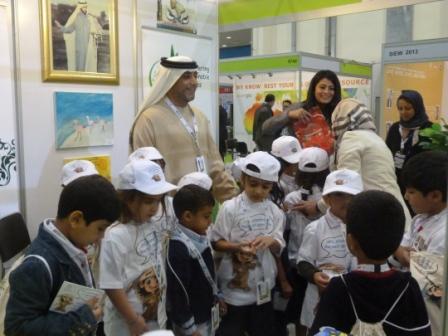
Smaller regional ngos like the Environment Friends Society, which focuses on educating women and children about environmental protection, were happy to talk about their activities here at the Abu Dhabi summit and exhibition. Chairman Dr Ibrahim Ali Mohamed and MD Angela Fandino
There are countries, companies and international organisations (UNEP, IRENA) galore exhibiting at the big hall here in Abu Dhabi. The only big international environment ngo with a presence appears to be WWF, which works together with EWS, the Emirates Wildlife Society. All the greater was my disappointment when I was refused entry to an official side event organised jointly by these two groups on the “Role of Renewable Energy in the GCC”. Since that is the main focus of my trip here, I was keen to get the WWF perspective on this. I was actually asked to leave the room, so wasn’t able to hear the representatives of UAE, Qatar, Saudi Arabia and Oman talk about their projects, chaired by Samantha Smith, the leader of WWF International’s Global Climate and Energy Initiative. Frustrating to have missed out on that opportunity, to which I had felt officially invited.
A climate-friendly future? Impressions of Masdar City
Today I paid a visit to Masdar City 17km from the centre of Abu Dhabi, set up in 2006 with the aim of being “one of the most sustainable cities in the world”, according to Masdar. Masdar was set up as a commercially driven renewable energy company and a strategic government initiative. The city is powered entirely by renewable energy and the buildings are designed to maximize energy efficiency.
This is an impression of the iconic architecture of Masdar around a pleasantly cool courtyard. (The modest gentleman on the couch is Sultan Aal Ali, in charge of Masdar’s development).
In the years since the vision of a sustainable, purpose-built city at the heart of a desert state was first launched, a lot of the enthusiasm seemed to have gone out of the project, at least in the view of a lot of media. That is one reason why I was keen to have a look at what is happening there today. I will be writing an article for our website on this in the next couple of weeks, so for today I’d just like to share some pictures, thoughts and impressions with you.
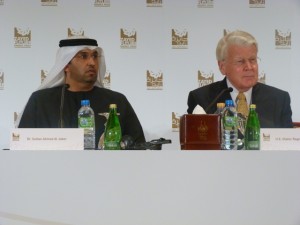
Dr. Sultan Ahmed Al Jaber, Director General of the Zayed Future Energy Prize with President Grimsson
Incidentally, as part of the World Future Energy Summit and at the ceremony announcing the 2013 Zayed Future Energy Prize here last night, the ICE connection was brought up again by the President of Iceland, Olafur Ragran Grimsson.
He was chairman of the prize jury and was talking about those connections between the record melt of the Arctic ice and the push for renewables here in the oil-rich Gulf region. Yes! The message seems to have arrived on the global stage.
Anyway, to Masdar City:
Using the sun to cool Masdar. Normally, air-conditioning would be one of the highest electricity-guzzlers and emissions producers. The architecture uses window-to-wall ratio, insulating building materials, shading and other means to keep buildings cool – and uses sun power to do the rest.
A modern version of a cooling wind-tower, to bring cold air to the courtyard. These towers have a long tradition in the region. They look great as well.
Hi-tech lab for nano-technology research at the Masdar Institute. The city is developing around the university complex.
This is the centre-piece of the brand-new 2nd phase of the Masdar Institute. The city is a work in progress. Today I was one of the first journalists to be allowed into the new development without safety helmet and boots for construction site safety.
Beautiful places, beautiful people! One of my guides from Masdar’s communications department against the background of a wall constructed from desert sand. Thanks!!!
Driverless public transport, using magnetic technology. Felt a little like sci-fi, but definitely got us across the complex. Not sure if it will catch on, but it was quite an experience.
I could go on all night, but will save the rest for a later date. There is plenty of building work going on. The German company Siemens will soon be moving in to its new headquarters in Masdar. Other companies are also planning to move in. The International Renewable Energy Association IRENA will ultimately have its headquarters here.
So far, students are the only residents. Seems a bit extravagant, which is one of the criticisms levelled at the eco-city in the past. But from what I saw today, things seem to be finally moving forward. EU Commissioner Connie Hedegard, who also visited Masdar today, told me Masdar was “leading by example”. She’s very positive about what’s happening in the region in terms of the growing interest in renewables. There’s a long way to go, she says – but stresses that applies to all of us.
Still seats available at this Masdar café today.



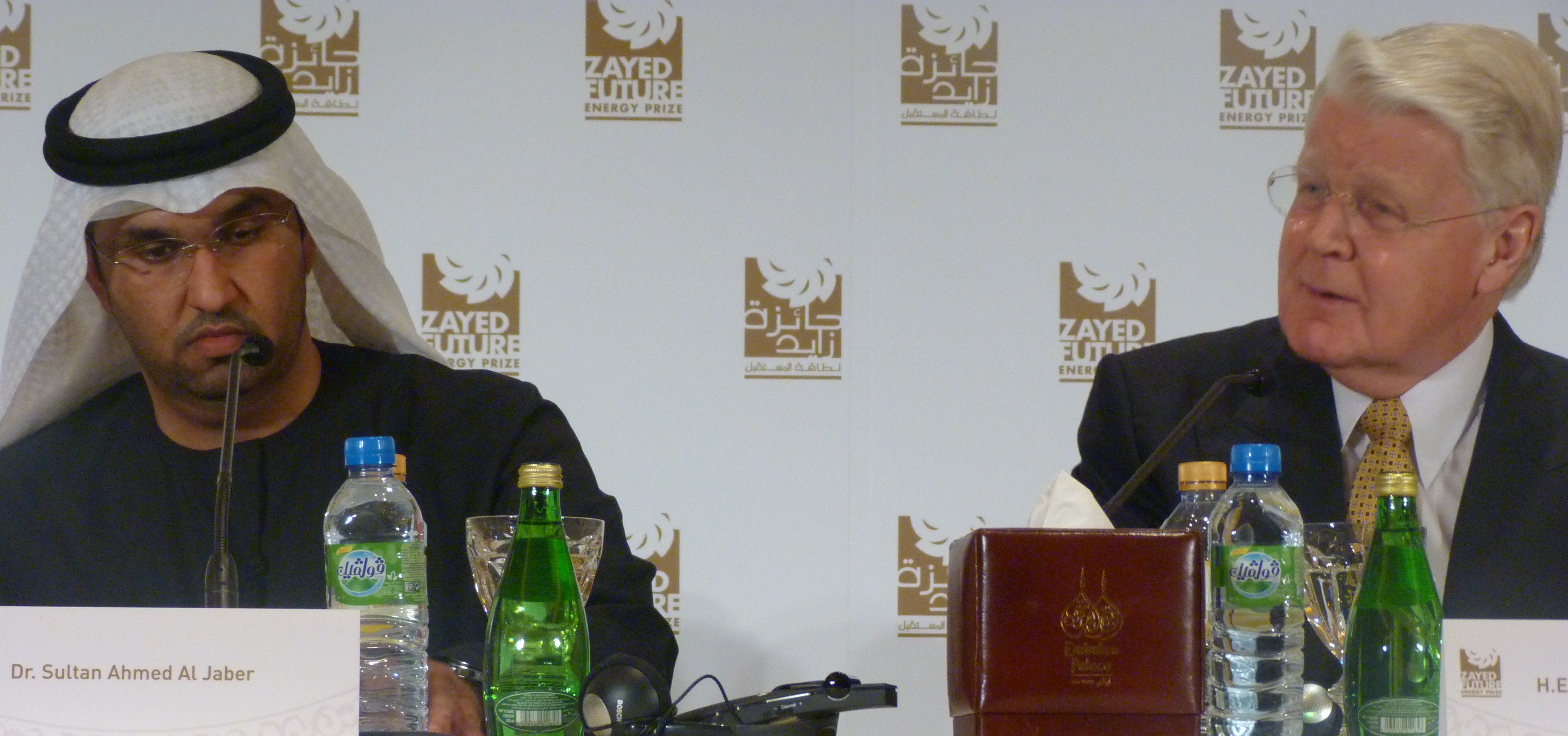
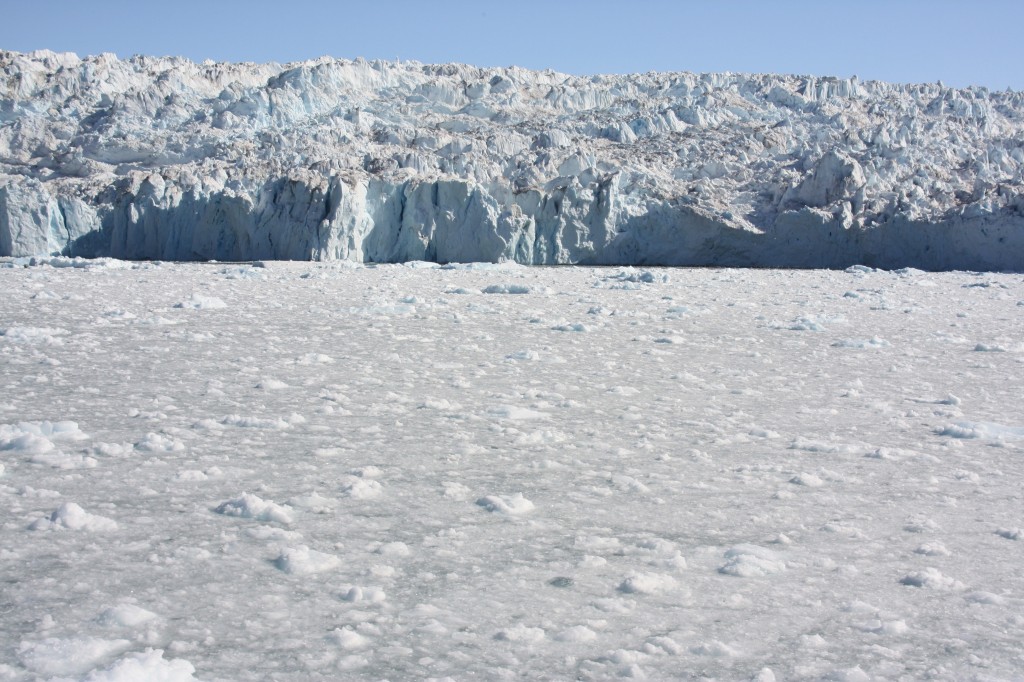

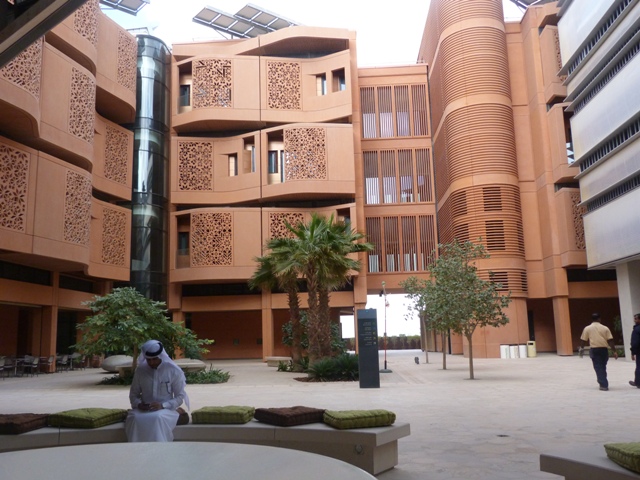


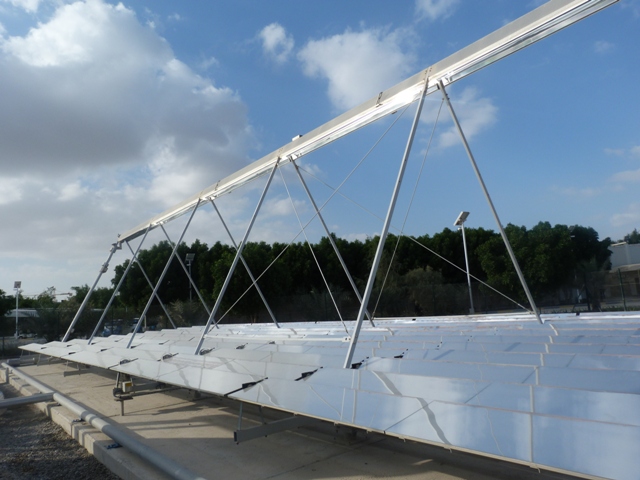
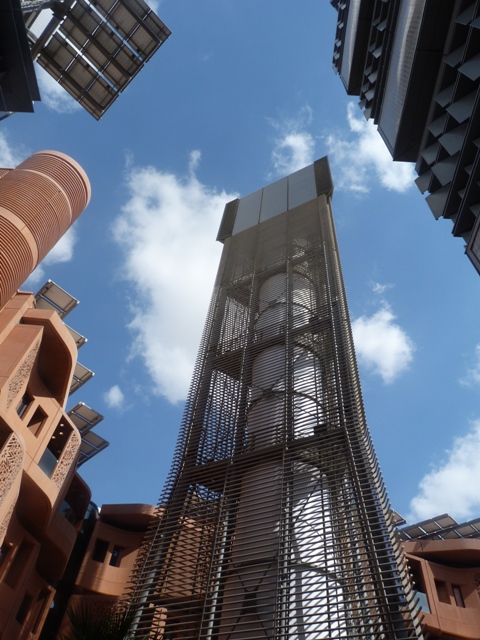
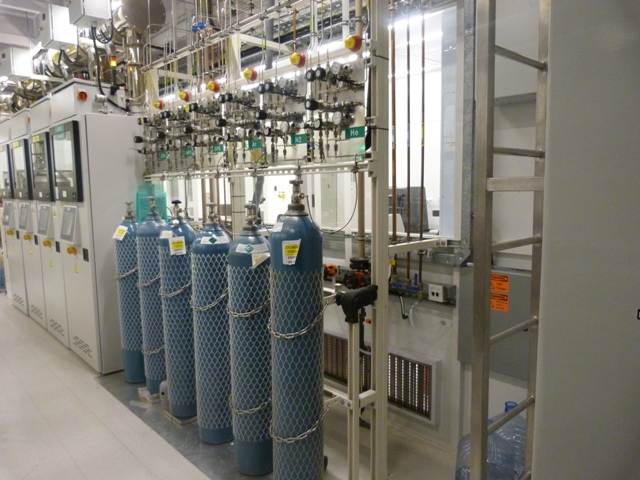
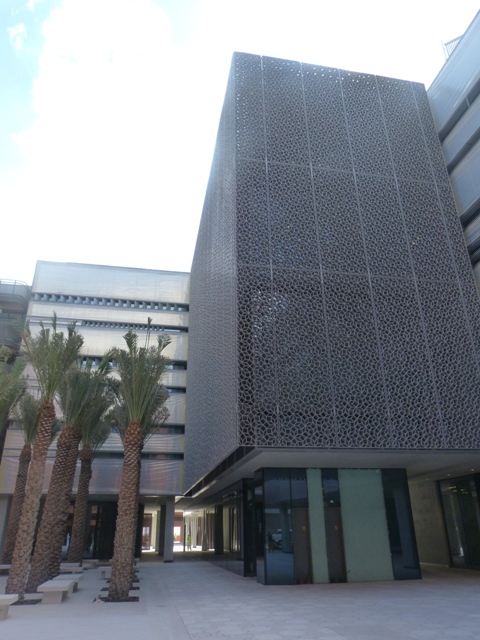
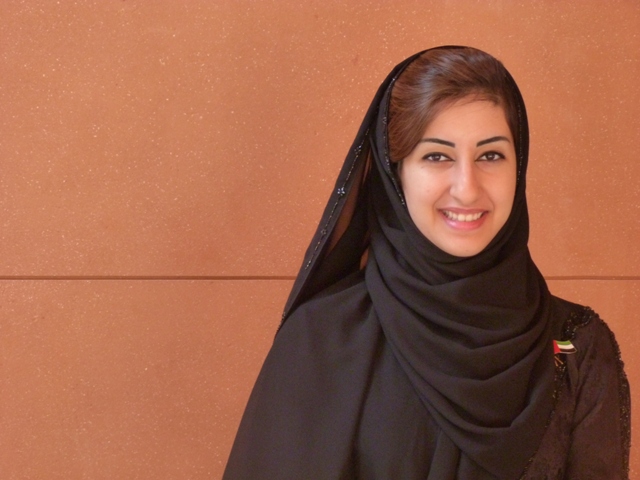
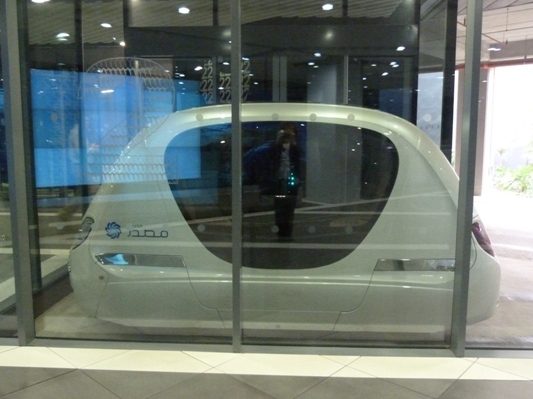
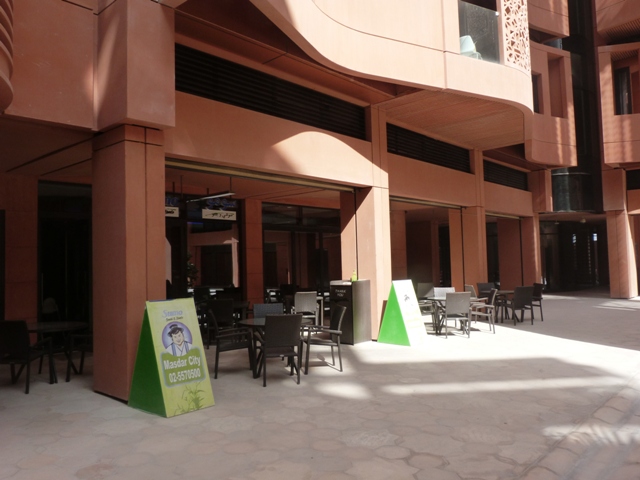
















Feedback